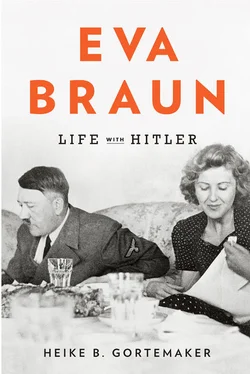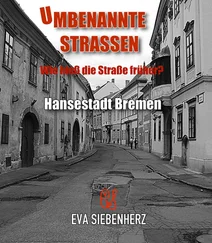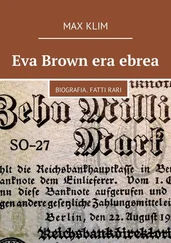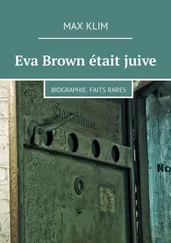The Populist writer Dietrich Eckart, for example, a bohemian and favorite of the salons who had lived in Berlin before World War I, put Hitler in contact with the Berlin piano manufacturer Edwin Bechstein and his wife, Helene, in the early 1920s, and this was both financially and socially valuable for Hitler. The Bechsteins lived in both the German capital and Munich, and not only were among the most important early financial backers of the NSDAP, but also arranged for Hitler to make further influential connections, such as with the family of the composer Richard Wagner in Bayreuth. 17Ernst Hanfstaengl likewise made an effort “to work on Hitler’s behalf” starting in 1922; fascinated by Hitler’s “aura of someone out of the ordinary” and his “unique appearance,” Hanfstaengl became a close companion with international connections. The publishers and spouses Hugo and Elsa Bruckmann also counted themselves among Hitler’s numerous admirers in Munich. Rich and politically influential, they contributed in many ways and in no small degree to Hitler’s social recognition. 18
In 1923, at the peak of hyperinflation in Germany, the NSDAP was as popular as it had ever been up to that point. The number of Party members rose to over fifty thousand. 19But after the failed Beer Hall Putsch (or Hitler Putsch) of November 8–9, 1923, in Munich—the violent, so-called national revolution against the “Berlin Jew-government,” in which fourteen members of the uprising and four policemen lost their lives—the Party’s rise came to a halt. The NSDAP was outlawed; Hitler and many of his comrades-in-arms ended up in prison or were forced to flee. The National Socialist movement seemed to be over, and the refounding of the Party in the Bürgerbräukeller on February 27, 1925, did not at first seem to make much of a difference. Financial problems, intraparty squabbles, and sluggish recruitment of new members gave the impression throughout Germany that the National Socialists were in decline. The situation changed abruptly in 1929. The worldwide economic depression, poverty, and rising unemployment put the German parliamentary democracy in an increasingly embattled position and helped the NSDAP achieve a renewed upswing nationwide, although the center of the Party remained in Munich. Hitler, a “howling dervish,” in Carl Zuckmayer’s words, was on the threshold of his political breakthrough in the autumn of 1929 when, in the photography store of his friend Heinrich Hoffmann, he met Eva Braun—the woman he was to die with sixteen years later in Berlin. 20
Eva Braun, baptized Eva Anna Paula Braun, was the second of three daughters of a vocational school teacher in Munich. When she was born, on February 6, 1912, troubled times lay ahead for Germany and the world. The Balkans, with its multicultural countries and border conflicts, had long been like a powder keg ready to blow up at any time. The assassination of Austrian Crown Prince Franz Ferdinand and his wife on June 28, 1914, unleashed the First World War, and Germany had to pay for its defeat with submission to the Versailles Treaty. The atmosphere within the Braun family was tense as well: Eva’s parents, Friedrich and Franziska Braun, underwent a marital crisis in 1919, after eleven years of marriage, which ended in their divorce on April 3, 1921. It is not known what caused the split. Possibly, as for many couples, their living apart for years as a result of Friedrich’s military service led to their estrangement. He had voluntarily enlisted in the war in 1914, and he was stationed first in Serbia, then elsewhere, finally serving in a military hospital in Würzburg until the end of April 1919. During this period, Franziska—a veterinarian’s daughter who had worked as a seamstress in a Munich textile company before her marriage—mostly lived alone with her three small children. In the divorce, she was granted custody of the girls, who were thirteen, nine, and six at the time. But the separation did not last long; the following year, on November 16, 1922, Friedrich and Franziska Braun remarried. 1
Financial reasons may well have played a large part in the Braun family’s reuniting. There had been famine in Germany since the end of the war; prices never stopped rising, and in August 1922 inflation reached an initial high-water mark of 860 marks to the dollar. While foreign visitors poured into Germany to buy things cheaply, it grew more and more difficult for Germans to pay for the basic food they needed with their ever-more-worthless money. 2The result was strikes, demonstrations, and labor unrest. Friedrich Braun himself, as a teacher, was not faced with unemployment, but in the period of hyperinflation in 1922–1923, when a pound of butter cost 13,000 marks, the fixed salaries of public employees lost an enormous amount of value. Craftsmen, small business owners, and the self-employed suffered likewise, of course. In these circumstances—inflation and reduced income—it was not possible to run two households. 3
The economic situation improved only after currency reform was carried out in November 1923. Chancellor Gustav Stresemann, in office for only three months, managed to stabilize the currency and reorient the German approach to the question of reparations. The conflict between Germany and the Allies about the amount and method of reparations payments had escalated ever since the Versailles Treaty of June 28, 1919, in which the victors in World War I dictated the terms of the peace. Stresemann’s skill in negotiating, especially with the French, resulted in a new, less strict financing program for the German Reich, which was drawn up in London on August 16, 1924, with the decisive help of American bankers. This Dawes Plan—named after Charles G. Dawes, the American lawyer and banker who played a leading role in its formulation—was intended to support the German economy in order to promote the rebuilding of Europe. Money poured into Germany from the United States in the following years—a loan of 800 million gold marks as well as private investments—enabling the economic recovery that had so long been hoped for. The so-called Golden Twenties of the Weimar Republic had begun, during which exports boomed while unemployment remained high and the national debt increased. 4
For the Brauns, these developments meant a great improvement in their own financial situation. In 1925, they moved, with a servant, into a large apartment at 93 Hohenzollernstrasse in Schwabing, Munich’s artists’ and entertainment district. In the following years the family could also afford an automobile; they bought a BMW 3/15 with the money from an inheritance. 5After the painful experiences of the inflation, they clearly preferred to convert their money into valuable property as quickly as possible. Still, despite a situation now lacking in material worries for the most part, Friedrich and Franziska Braun’s marriage seems to have remained unhappy. Eva Braun’s friend Herta Ostermayr later described Eva’s family circumstances in that period as “not very pleasant.” That is why, Ostermayr said, Eva Braun spent “almost her whole childhood at my house” and also took vacations “with me at the rural estate of my relatives.” Eva Braun’s ties to her school friend’s parents were so close, according to Ostermayr, that she called them “Father and Mother.” 6Herta Ostermayr, or Herta Schneider after her marriage in 1936, knew Eva Braun from elementary school and was her closest friend. Later, she and her children would be regular guests at the Berghof until the end of the Nazi regime.
Ostermayr’s statements are significant because they contradict the testimony of the Braun family. Franziska Braun in particular emphasized to the journalist Nerin E. Gun that her daughter grew up in an intact household. She assured Gun that “not a single cloud” had cast its shadow across her marriage, “not even a real quarrel.” 7This statement is obviously false, in light of the legal dissolution of the marriage. Franziska Braun—who, like every other member of the family, fell under pressure to justify herself after 1945, given her personal relations with Hitler—retroactively constructed a private idyll that never, in fact, existed.
Читать дальше












